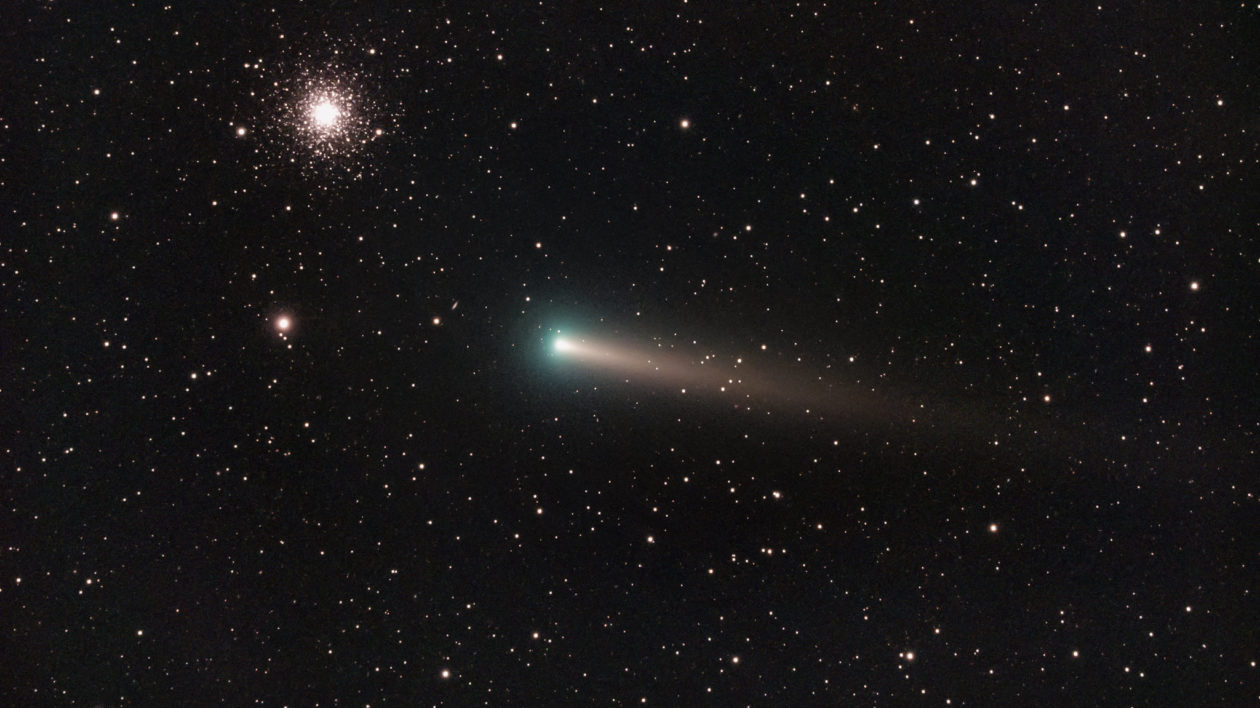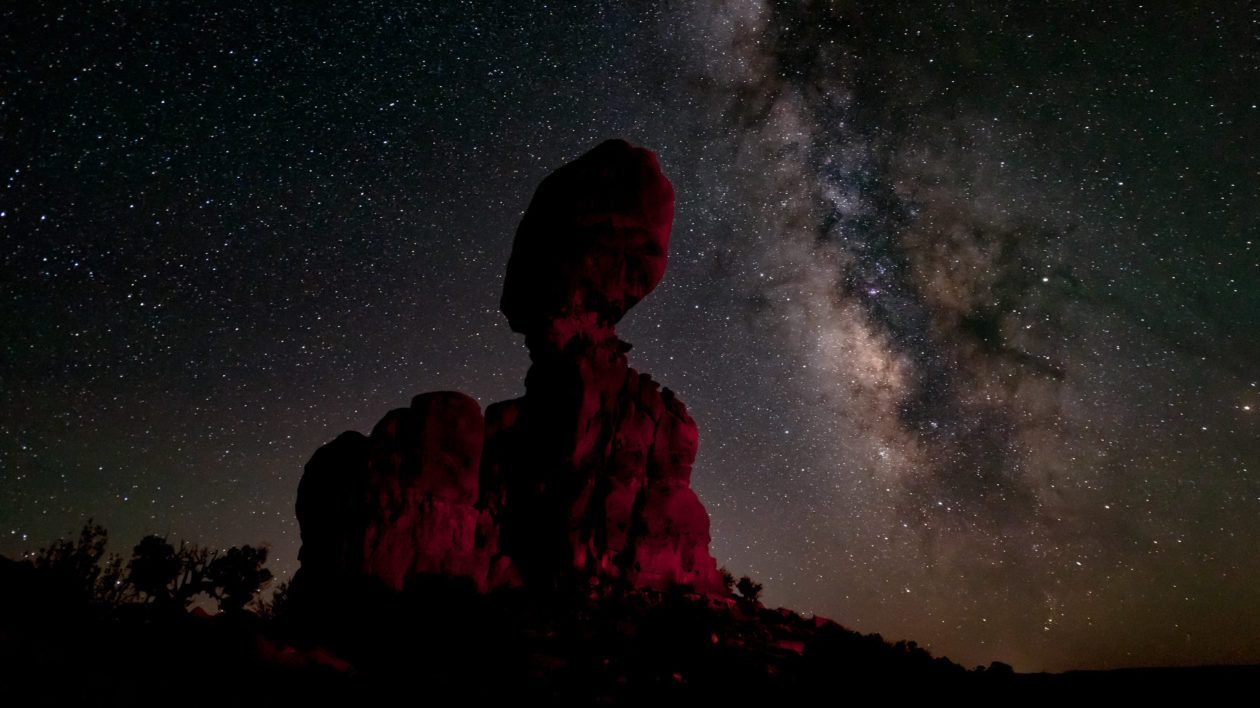It’s dark, no street lights. It’s cold, I can see my breath by headlamp. I’m on a trail bordering Sawtooth National Recreation Area near Sun Valley, Idaho. Even at night with limited sight, I can l feel the vast wild around me.
I’m looking straight ahead when eyes looking back at me reflect off the glow on my forehead. It’s an owl. I turn off my light as the bird lifts. I look for its wings in the sky then see something even more unique above my head. Glitter. A slow-moving mass with a shimmering tail.
I stop walking and stare. It’s not a shooting star. It’s lasting too long. It’s not a satellite. Those move, but don’t have sparkle tails. It’s a comet. My first comet ever. The Great American total solar eclipse of 2017 was remarkable, but the whole country was watching with me. This comet, Leonard, is more remarkable because I’m not in a crowd when I see it. It’s my own sighting and it’s nearly impossible to see unless you’re where I am. A Dark Sky Reserve.

What Are Dark Sky Designations?
For Leonard, I was lucky enough to be looking up at the right time while also in the right place, the Central Idaho Dark Sky Reserve. It’s the nation’s first designated reserve. There are 19 Dark Sky Reserves worldwide.
Reserves are the top-tier designation by the International Dark-Sky Association. Reserves are massive and include private and public lands offering exceptional nocturnal environments that are already protected for their natural resource value. Idaho’s rare reserve, designated in 2017, hangs over 906,000 acres including Sawtooth National Recreation Area which celebrates its 50th anniversary this year.
Reserves have a core zone with a supportive buffer surrounding the protected core. Sun Valley, Idaho is part of the supportive buffer for the Central Idaho Dark Sky Reserve. So is Ketchum, which is officially designated a Dark Sky Community.
Other dark sky designations cover smaller areas and include parks, like the new U.S. designation in West Virginia, Watoga State Park. Park designation requires location staff to offer dark sky programming for the public.
Campgrounds and subdivisions are awarded designations too. They earn community or place designations. Outdoor lighting must be considered, development design is also a factor as is residential education. Texas is keen on community designations. The Lone Star State has four Dark Sky Communities including Horseshoe Bay. It’s about 50 miles from Austin, but its population of 3,500 prefers a natural setting for its lake houses so there aren’t any street lights.

Why Do Dark Skies Matter?
Just like undeveloped land matters with the fast encroaching pace of humanity, dark sky matters too. It means there are still places on our planet dominated by a black ink canvas pocked with bright white specks at night rather than the overwhelming, man-made light pollution found most everywhere else.
That’s particularly true for sanctuaries. Dark Sky Sanctuaries are not sizeable like Reserves, but they are still significant. They hold high value because these areas are so undeveloped, they’re hard to get to. They’re light on light, and light on traffic. They promote long-term conservation and they’re isolated therefore limiting access and also limiting the public education component. No need to provide dark sky programming for the public if most of the public doesn’t visit.

Boundary Waters Canoe Area Wilderness is a Dark Sky Sanctuary. Makes sense since access is by paddle rather than power. Although, plenty of people want to visit Boundary Waters. Farther away and even harder to get to is Stewart Island/Rakiura in the southern tip of New Zealand. It’s also a Dark Sky Sanctuary. It’s the country’s third-largest island, but only 350 people live there.
Worldwide, there are 15 Dark Sky Sanctuaries. Most of them are in the U.S. (unlike Reserves where of the 19, there’s only one in the U.S. The one I met Leonard in).
I walked the trail again the morning after my comet sighting. I wanted to be sure there wasn’t a random reflection from powerline, snow plow or plane where Leonard had been. None of that revealed at sunrise. The slow-sliding, sparkling streak from the night before displayed higher than the Sawtooth Mountain Range and well away from the airport with no powerlines or plows in sight. Leonard indeed. Thank you Dark Sky.




Loved this Kris. Fun writing
Thanks for praising the CIDSR.
Many people realized the need to protect this region of Idaho
starting with Idaho US Senator Frank Church and the Wilderness Act, and the
creation of the SNRA. Others followed with light pollution ordinances
for Ketchum, Hailey, Sun Valley, and Blaine County.
Then ICL and Stanley
and the US Forest Service
brought awareness of our unique dark skies to the IDA which in 2017
designated 906,000 acres of this land as the nation’s first Gold Tier
Dark Sky Reserve. Now it’s up to us, the local conservationists and star
gazers to protect what we have — pristine dark skies with views of our
lovely home, the Milky Way Galaxy.
Steve Pauley MD
Ketchum 2022
Thanks you for this information and to those who advocate for dark sky reserves. I wish there were one in my area of SW Alabama. Light pollution is robbing generations of Nature’s greatest wonders.
3000 years ago David wrote of this in Psalm 19:
“The heavens declare the glory of God, the skies proclaim the work of his hands;
Day after day they pour forth speech, night after night they reveal knowledge…”
Maybe the darkest sky I’ve ever seen was Cape May Point, NJ. A million stars over the ocean, with a beam of light cutting across every 15 seconds. Mount Rainier and Olympic National Parks in Washington were dark too, but also cloudy a lot, plus your under forest canopy.